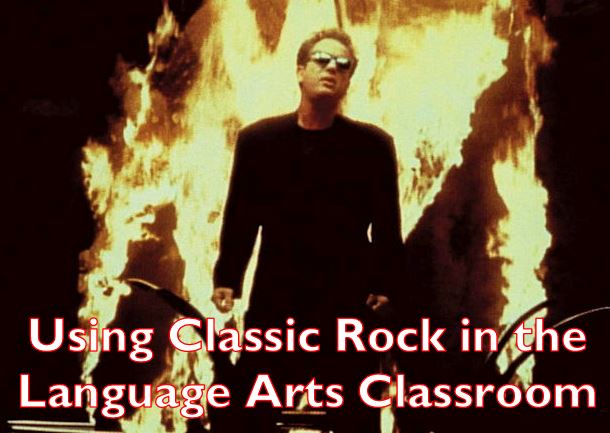 “We Didn’t Start the Fire” is a perfect song to study either at the end of the school year or the start of the New Year. For me, nothing beats coming back to school and already having a fun, creative lesson planned for the first week, which is why I always like to start January out with this mini-unit.
“We Didn’t Start the Fire” is a perfect song to study either at the end of the school year or the start of the New Year. For me, nothing beats coming back to school and already having a fun, creative lesson planned for the first week, which is why I always like to start January out with this mini-unit.
There are countless lessons based off of Billy Joel’s classic rock anthem “We Didn’t Start the Fire.” Many lessons out there take advantage of Joel’s list of important people, places and things and spin-off into a history lesson. However, as a language arts teacher I needed a way to make the idea fit my ELA standards if I wanted to use this is my classes. So I decided to create a unit looking more at the style and craft of the song than the actual lyrics. Check out how I use this classic song in my classroom, and then comment on what YOU do when you come back to the classroom after winter break.
 Skills and Standards I focus on:
Skills and Standards I focus on:
Rhyme Scheme (RL.5), Word Choice/Meter (RL.4), Theme (RL.2),
Summarizing (RL.2)
What I Do:
First, I start with a rhyme scheme formative assessment. (Click for a free printable of the easy formative I use). I use this to determine how in-depth to make my direct instruction on Rhyme Scheme and Meter, which I do next.
After we have a clear understanding of rhyme scheme and meter I hand out the lyrics and assign students small sections of the lyrics to study. I like to weave this into my language arts class by explaining that even though we are studying the STYLE of the song more than the CONTENT, both ideas are truly intertwined. (For more ideas on how to teach Style versus Content, take a look at my RaW Journal entry). If you want to focus more on your research standards, feel free to make this part into a longer lesson. I like to just spend a short part of the class having students simply identify nouns in their section and the year that they were important.
A fun twist is to have students predict Joel’s organizational pattern. In reality, he created the song to list things in chronological order from 1940 to 1980. See if after doing research the students can recognize this pattern. It’s a great way to bump up the lesson to a higher thinking level.
Next, I treat this song like it is any other type of literature by reviewing the author’s biography, the author’s purpose for writing it, and possible themes.
Now comes the fun part. Once students understand Joel’s organizational pattern and purpose for creating the song it’s time to apply the concepts. Have students brainstorm a list of important people, places, things and ideas from the past year. (Again, this is great to use at the end of the school year or at the start of the New Year). Then, in groups have students determine the rhyme scheme of a section of stanzas and rewrite the lyrics using current ideas.
Bump up the rigor by having students match the rhyme scheme AND the meter and/or having the class determine their own organizational pattern to use for the class re-creation of the song
When all of the groups are done re-creating their lyrics, use this instrumental version of the song and have your own class karaoke session!
Want to use this mini-unit but don’t want to create all of the handouts? Go to my Teachers pay Teachers store to buy this product with all of the PowerPoints, handouts, research organizers that I use.
